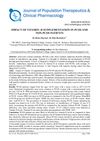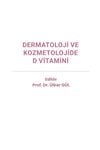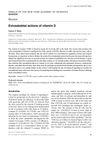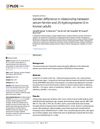Estimation of Vitamin D Levels Among Female Students at University of Sciences and Technology, Aden, Yemen: A Cross-Sectional Analysis
March 2025
in “
Yemeni Journal For Medical Sciences
”

TLDR Most female students in Aden, Yemen, have low vitamin D levels, causing health issues.
A cross-sectional study conducted on 150 female students at the University of Sciences and Technology in Aden, Yemen, revealed a high prevalence of hypovitaminosis D (HVD), with 89.3% of participants affected. Among them, 82.7% had vitamin D insufficiency (VDI) and 6.7% had vitamin D deficiency (VDD). The study found significant associations between vitamin D status and symptoms such as muscle pain, bone pain, and hair loss (p=0.001). Additionally, the use of sunscreen and not taking vitamin D supplements were linked to an increased risk of HVD (p=0.001). The findings indicate that the rate of HVD among these students is higher than global averages, highlighting the need for interventions to address vitamin D deficiency in this population.




